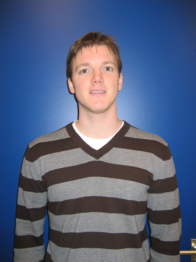Electron transport and spin phenomena in hybrid organic/inorganic systems
Promotion date: 26. February 2010
Promotor(s): Prof. Dr. Ir. D.N. Reinhoudt and Prof. Dr. Ir. Wilfred van der Wiel
| Electron transport and/or spin behaviour is studied in several organic/inorganic systems. The use of organic chemistry allows for: engineering structures at the atomic scale, bottom-up fabrication and self-assembly. Thereby opening up ways to study key problems in solid-state physics. Very long relaxation times are predicted in organic materials, making these devices very promising for spintronic applications. Very pure organic single-crystals are studied, as most organic materials have low mobilities due to impurities and the lack of long-range order. Photo- and e-beam lithography have been used to fabricate singe-crystal field-effect transistors with ferromagnetic electrodes, for which it is possible to achieve parallel and anti-parallel magnetizations, needed for spin-valve devices. Spin phenomena, like the Kondo effect and Ruderman-Kittel-Kasuya-Yosida interaction, are studied in 2D spin systems. These phenomena are studied in a thin Au layer, covered with a monolayer of organic Co complexes, which contain an unpaired spin. |
What kind of research is dominant in your thesis study, fundamental of application-oriented?
The more fundamental research topics on spin interactions arose after two years of my thesis project. The initial subject was focused on building spintronic devices. Building a field-effect transistor was successful.
It appeared difficult to inject spins in the organic single-crystal. It was special to achieve the intermediate goals in this project, step by step: the deposition of the electrodes, adding the organic single-crystals, and the realization of the field-effect transistors.
In order to build the different devices in my project, I spent a lot of time in the cleanroom, especially using photolithography, deposition and etching techniques.
During the thesis period, how did you develop as a scientific researcher?
It is important to master your own project independently. I learned to set intermediate goals. For example: building electrodes, adding organic material, and then building the circuits. Together with my supervisors, I had feedback talks regularly, to keep focusing on the goals we wanted to achieve at the end, in all stages.
What are your future plans?
I would like to do research and build devices which will be used in the future, favourably directly usable in industry. For example TNO, ASML and Philips are interesting institutes for me, to have a good taste of the way working in industry will be like.
Perhaps in five years time, I can become head of an own development section, performing projects which are related strongly to industrial applications.
What, in your opinion, is important for Mesa+ to give attention to in the future?
To stay respected in the international research community, I guess it is important to attract good scientists from all over the world and to develop good research programs. I know efforts to achieve this are already undertaken, for example by cooperation with Japanese research groups.
Mesa+ has the advantage of different research groups closely working together already. I experienced this myself. For the synthesis of organic molecules, expert chemists were nearby in the Langezijds building. Biking a short distance (or even having a nice walk in the summer) was enough to get valuable information on working out the process.
In Strategic Research Orientations, presentations were held regularly among colleagues of different groups. These meetings are very valuable, I believe, and worthwhile to maintain in the future.

